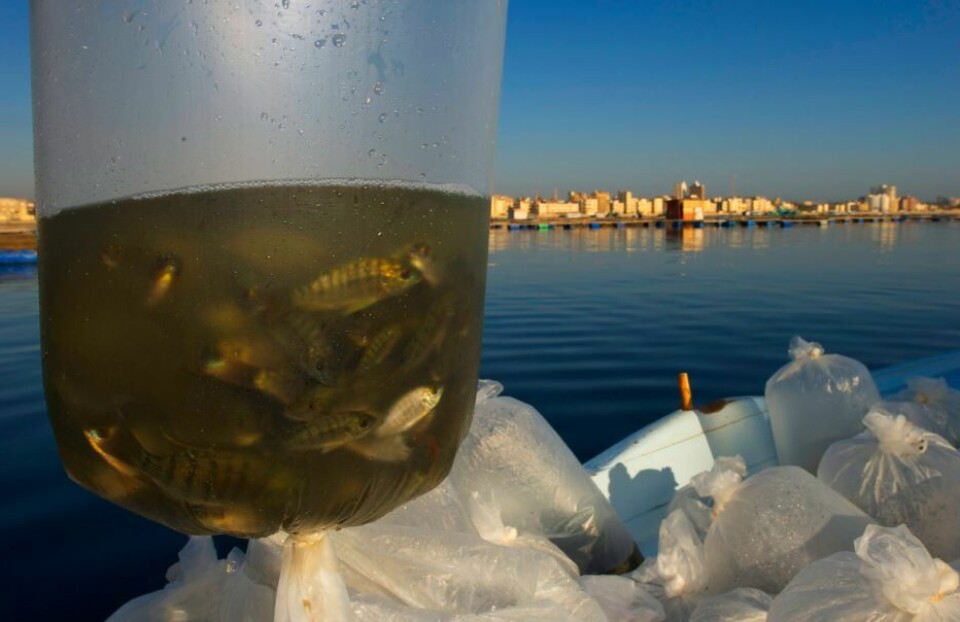
Genomic selection boosts tilapia production ‘by 10% per generation’
Work by WorldFish to strengthen the technological foundations of aquaculture in developing countries made major advances in 2017, with the release of new generations of improved fish lines and the use of genomic selection tools to introduce disease-resistance and feed-efficiency traits.

In its newly-released 2017 annual report, the non-profit organisation explained that it and its partners have been breeding genetically improved farmed tilapia (GIFT) since the late 1980s. The latest GIFT generation shows that selective breeding for increased growth is still delivering gains of about 10% per generation.
WorldFish reported that the Abbassa strain developed in Egypt is also showing strong performance, and fish farmers are reaping the benefits. It quoted one Egyptian fish farmer, Mohamed Gamal, who had increased production from around 9.5 tonnes per hectare to 12 tonnes per hectare in successive years after receiving the Abbassa strain in 2016.
A WorldFish survey of 83 farms in four major tilapia-producing districts showed that the Abbassa strain had higher growth and required 13.2% less feed than another commercial strain to achieve the same production. As a result, the Abbassa strain generated significantly higher profits (47.8% ) per feddan (0.42 ha) compared to the other strain.
Work on carp
These improved strains of tilapia are spreading rapidly. More than 70% of tilapia production in the Philippines comes from GIFT or GIFT-derived stock, as does around 50% in Thailand and 20% in Vietnam.
The report said work on carp species is at an earlier stage but is hoping for similar impacts. Last year WorldFish established two breeding programmes in Bangladesh for catla and silver carp – the first in the world – and harvested the first improved generation of rohu, which showed a growth gain of around 10%.
WorldFish is also turning its attention to other characters and factors that influence farmers’ fish enterprises such as disease resistance and feed efficiency. Based on a roadmap created with global experts at a WorldFish-hosted fish breeding workshop on 23-24 May last year in Edinburgh, the research is using genomic selection tools to introduce these characteristics into its improved tilapia strains.
Disease resistance
Gareth Johnstone, director general of WorldFish, said in the report: “In Asia and Africa, our genetic improvement programme took a major step forward with the use of genomic selection tools to introduce characteristics such as disease resistance and feed efficiency into our improved tilapia strains. These are vital for ensuring the productivity and sustainability of fish farms, particularly in Africa, where aquaculture investment is critical to meet current and future food demands.
“In Bangladesh, production of hilsa, the national fish, has increased dramatically, in large part due to our work with the Department of Fisheries and local communities to conserve and restore depleted stocks. As production heads towards half a million tonnes per year, the government is looking to lift the ban on hilsa exports, which has been in place since 2012.
Fish refuges
“In Cambodia, the number of community fish refuges, which provide a dry season sanctuary for brood fish, was increased from 40 to 134, directly benefiting well over half a million people through better access to fish in the wet season.
“FISH (CGIAR Research Program on Fish Agri-Food Systems) work in Myanmar, complementing bilaterally-funded WorldFish research, has boosted household consumption of small fish by 13% on average, with a particular effect on the nutrition and development of under-fives. As FISH activities continue to develop, the inputs from the programme will enhance impacts that contribute to achieving the WorldFish strategy, creating long-lasting change for the millions of people who depend on fish in the developing world.”
The report can be read here.























































